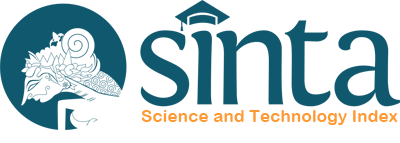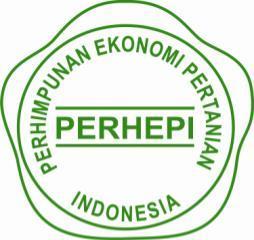Seleksi Klon Kentang Potensial dan Tanggap terhadap Serangan Organisme Pengganggu Tumbuhan
Selection of Potential Potato Clones and Its Response to Pest and Disease
DOI:
https://doi.org/10.51852/jaa.v6i2.554Keywords:
blight, moderate, propagation, resistant, tuberAbstract
The difficulty of obtaining industrial potato varieties that can produce high production and relatively resistant to certain pests and diseases is one of the inhibiting factors for industrial potatoes in Indonesia. The selection of potato clones were expected to produce clones that produce high production and are relatively resistant to certain pests. Twelve potato clones were selected in the Experimental Field of PT. AIMS located at Cinta Village, Karang Tengah District, Garut Regency from May to September 2021. A Randomized Complete Design (RCBD) consisting of twelve treatments and each treatment with five replications were used. The results of the study showed that two clones (Clone–1 and Clone–5) had high yield potential. Clone–1 and Clone–5 produced the highest number of tubers and bulb weights compared to other clones. Clone–5 also showed moderate response to Phytophthora infestants and resistance to Fusarium sp., and show resistance response to insect pests such as Spodoptera litura, Liriomyza sp, and Thrips sp. However, Clone–1 showed a susceptible response to wilt and blight diseases as well as the three species of insect pests. The results of this study concluded to consider the use of Clone–1 and Clone–5 as potato tuber propagation soon.
References
Ambarwati AD, Kusmana, Listanto E. 2015. Klon klon kentang transgenik hasil persilangan terseleksi tahan terhadap penyakit hawar daun Phytophthora infestans tanpa penyemprotan fungisida di empat lapangan uji terbatas, Jurnal Biologi Indonesia. 11 (2): 177–186.
Arifin MS, Nugroho A, Suryanto A. 2014. Kajian panjang tunas dan bobot umbi bibit terhadap produksi tanaman kentang (Solanum tuberosum L.) varietas Granola, Jurnal Produksi Tanaman. 2 (3): 221–229.
Aulia AL, Nawawi M, Wardiyati T. 2014. Uji daya hasil tujuh klon tanaman kentang (Solanum tuberosum L.). Jurnal Produksi Tanaman. 1 (6): 514–521.
[BPS] Badan Pusat Statistik (2021). Laporan Produksi Tanaman Sayuran Tahun 2019–2021. http//www.bps.go.id.
Dennis AJ, Richard J, Vakoch DL. 1996. Potato late blight forecasting models for the semiarid environment of southcentral Washington, Phytopathology. 86 (5): 480–484.
Djoko DM, Syah JA, Sayekti AL, Hilman Y. 2017. Kelas benih kentang (Solanum tuberosum L.) berdasarkan pertumbuhan, produksi, dan mutu produk. J. Hort. 27 (2): 209–216.
Duriat AS. 2008. Pengaruh ekstrak bahan nabati dalam menginduksi ketahanan tanaman cabai terhadap vektor dan penyakit kuning kriting. J. Hort. 18 (4): 446–56.
Kusmana. 2003. Evaluasi beberapa klon kentang asal stek batang untuk uji ketahanan terhadap Phytophthora infestans. Jurnal Hortikultura. 13 (4): 28–220.
________. 2012. Uji adaptasi klon kentang hasil persilangan Varietas Atlantik sebagai bahan baku keripik kentang di dataran tinggi Pangalengan. J. Hort. 22(4): 342–348
_________, Ambarwati AD. 2018. Uji adaptasi klon–klon kentang transgenik tahan hawar daun pada agroekosistem Jawa Barat dan Jawa Tengah. J. Hort. 28 (2).
Manik F, Widyayanti S, Saragih J. 2012. Evaluasi enam varietas kentang di dataran tinggi Karo–Sumatera Utara. Jurnal Agrin. 16 (2): 117–124.
Moekasan TK, Prabaningrum L, Ratnawati ML. 2005. Penerapan PHT pada sistem tanam tumpanggilir bawang merah dan cabai. Monografi No. 19. Bandung: Balai Penelitian Tanaman Sayuran.
Monjil MS, Ulfat T. 2020. Severity of potato late blight under different weather conditions in Mymensingh region of Bangladesh. Progressive Agriculture. 31 (2): 74–80.
Oerke EC. 2006. Crop losses to pests. Journal of Agricultural Science. 144 (1):31–43.
Sarjan M, Stella R, Thei P, Windariningsih M, Haryanto H, Supeno B. 2022. Intensitas serangan hama pada tanaman kentang yang dibudidayakan dengan perbanyakan stek pucuk. Prosiding SAINTEK. 4: 232–245.
Sofiari E. 2009. Daya hasil beberapa klon kentang di Garut dan Banjarnegara. Jurnal Hortikultura. 19(2): 148–154.
Suryaningsih E. 2008. Pengaruh pestisida biorasional untuk mengendalikan hama dan penyakit penting pada tanaman kentang’, J.Hort. 18 (4): 435–445.
Tasrif A, Murdiati T. 2021. Deteksi patogen Helminthosporium solani pada umbi kentang. Di dalam: Seminar Nasional Perhimpunan Fitopatologi Indonesia (PFI). Universitas Jember 17–19 Oktober 2021.
______, Harniati, Nazaruddin. 2021. Supply chain for horticulture business. Di dalam: Abdullah AG et al., editor. Proceeding of the International Symposium South East Asia Vegetable 2021 (SEAVEG 2021); 2021 Nov 18–20; Yogyakarta, Indonesia. Advances in Biological Sciences Research. 165–176.


1.png)









